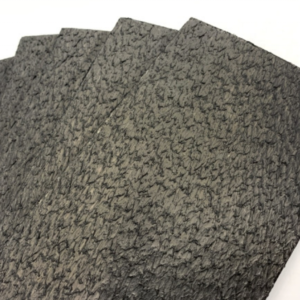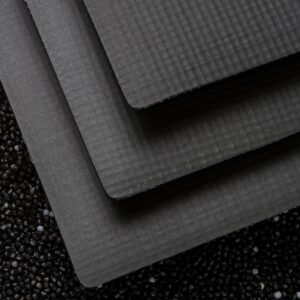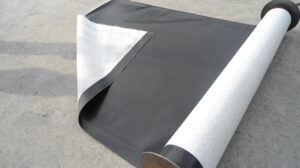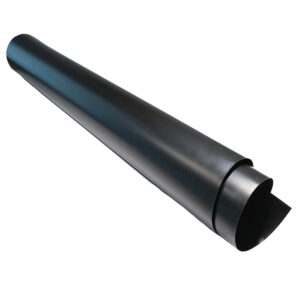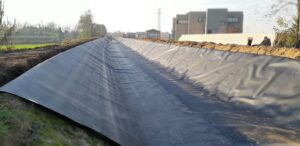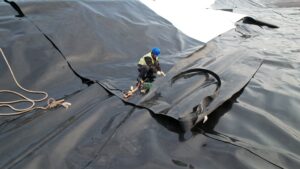Geomembrane is a high-performance geosynthetic material, usually made of polyethylene (PE), polyvinyl chloride (PVC), butyl rubber (NBR) or other synthetic materials. It has the following characteristics:
Anti-seepage performance: Geomembrane is one of the anti-seepage materials, which can effectively prevent the leakage of water, gas and other liquid substances.
Chemical Resistance: This material can effectively resist the attack and corrosion of various chemicals, avoiding leakage problems.
High strength: Geomembrane has high strength and excellent wear resistance, and can withstand large loads and environmental influences.
Environmental protection: Geomembrane complies with environmental protection requirements and does not add any harmful substances in the production process.
textured geomembrane
Textured geomembrane is a geosynthetic with a textured surface, usually made of materials such as high-density polyethylene (HDPE) or low-density polyethylene (LDPE). It is characterized by raised lines on the surface, which can increase friction and adhesion, and improve its anti-seepage effect and stability.
Textured geomembrane is mainly applicable to the following fields:
Landfill: Due to its good anti-seepage performance and anti-tear performance, it can be used as an anti-seepage layer for landfills.
Sewage treatment plant: It plays a very good anti-seepage and protection role in the process of industrial wastewater and urban sewage treatment.
Mine tailings pool: It can effectively solve the problem of tailings leakage and protect the environment from pollution.
Hazardous waste disposal site: For the disposal site of hazardous substances such as hazardous chemicals or radioactive materials, leakage problems can be effectively avoided.
Artificial lakes, artificial channels and other places: used as an anti-seepage layer for water bodies and channels, etc., which can keep the water source clean and flow normally.
polypropylene geomembrane
Polypropylene geomembrane is a geotechnical anti-seepage synthetic material made of polypropylene (PP), which has the advantages of high strength, high toughness, anti-aging and chemical corrosion resistance.
Polypropylene geomembrane is mainly suitable for the following fields:
Landfill: Due to its good anti-seepage performance and anti-tear performance, it can be used as an anti-seepage layer for landfills.
Sewage treatment plant: It plays a very good anti-seepage and protection role in the process of industrial wastewater and urban sewage treatment.
Mine tailings pool: It can effectively solve the problem of tailings leakage and protect the environment from pollution.
Hazardous waste disposal site: For the disposal site of hazardous substances such as hazardous chemicals or radioactive materials, leakage problems can be effectively avoided.
The anti-seepage layer of water bodies and channels in water conservancy and hydropower projects can keep the water source clean and flow normally.
epdm geomembrane
EPDM geomembrane is a high-performance geosynthetic material made of synthetic rubber (ethylene propylene diene monomer, EPDM). It has the following advantages:
Chemical corrosion resistance: EPDM geomembrane can resist the attack and corrosion of various chemical substances.
High Resilience: This material is very flexible and is able to adapt to deformations and changes in the base.
Aging resistance: EPDM geomembrane has excellent aging resistance, can remain stable in long-term use, and is not easily damaged by oxidation or ultraviolet rays.
Convenient construction: This material can be sealed together by heat welding, and the construction is simple and convenient.
EPDM geomembrane is mainly applicable to the following fields:
Sewage treatment facilities: This material can be used to treat urban and industrial sewage to ensure clean water sources.
Anti-seepage dam: As a waterproof material in water conservancy projects, it can play a very good role in anti-seepage.
Environmental engineering: such as landfills, hazardous waste disposal sites, etc., can effectively prevent the leakage of harmful substances and protect the environment.
Author
-

Founded in 2002, Tinhy's team focuses on the manufacturing, marketing, installation, application and research and development of geosynthetic materials.
View all posts

